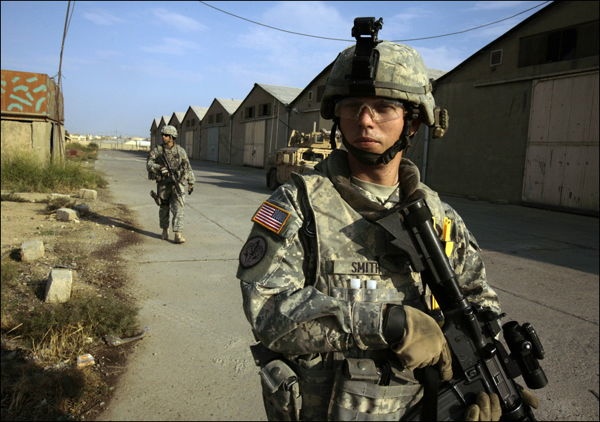The Increasing Costs Of Paying For Our Wars

The Article: Paying the Costs of Iraq, for Decades to Come by James Fallows in The Atlantic.
The Text: A little over 10 years ago, George W. Bush fired his economic adviser, Lawrence Lindsey, for saying that the total cost of invading Iraq might come to as much as $200 billion. Bush instead stood by such advisers as Paul Wolfowitz, who said that the invasion would be largely “self-financing” via Iraq’s oil, and Andrew Natsios, who told an incredulous Ted Koppel that the war’s total cost to the American taxpayer would be no more than $1.7 billion.
As it turns out, Lawrence Lindsey’s estimate was indeed off — by a factor of 10 or more, on the low side. A new research paper by Linda Bilmes, of the Kennedy School at Harvard, begins this way:
The Iraq and Afghanistan conflicts, taken together, will be the most expensive wars in US history — totaling somewhere between $4 to $6 trillion.
The most powerful and disturbing part of Bilmes’s analysis is the explanation of why, even though American combat deaths and military exposure in Iraq and Afghanistan are coming to their ends, covering the costs has just begun. In the introduction she says:
One of the most significant challenges to future US national security policy will not originate from any external threat. Rather it is simply coping with the legacy of the conflicts we have already fought in Iraq and Afghanistan.
As the paper lays out, a surprisingly large fraction of the long-term costs comes from the disability payments and medical obligations to people who served. People who were 18 or 20 years old when the war began, and who were injured or disabled (but survived), may need public help until very late in this century. The argument is too detailed to convey fully here, but here is an example:
The majority of these costly measures – including supplementary pay increases, expansion of TRICARE [military health program] subsidies, upgrades to the VA system and increases in eligibility for veterans benefits – were adopted, at least in part, because the US was facing the first big test of the all-volunteer force (AVF). The AVF depends on pipeline of recruits, and research has shown that the recruiting pool to the AVF is sensitive to economic inducements, including veterans’ benefits.
But from a budgetary standpoint, these have been hidden costs of the war, in which cumulatively hundreds of billions of dollars have been spent on expanding military health care, pay, recruitment, and service and retirement benefits, without any discussion about how to pay for them. Most of these costs were not covered by war appropriations. And when the topic of pensions is examined in the coming years, it is likely that any reforms that benefit the current generation of veterans will require additional long-term expenditures for the Defense department.
Read it, and reflect on the people who have never been called to account for these and other misjudgments of what launching the invasion would mean.









